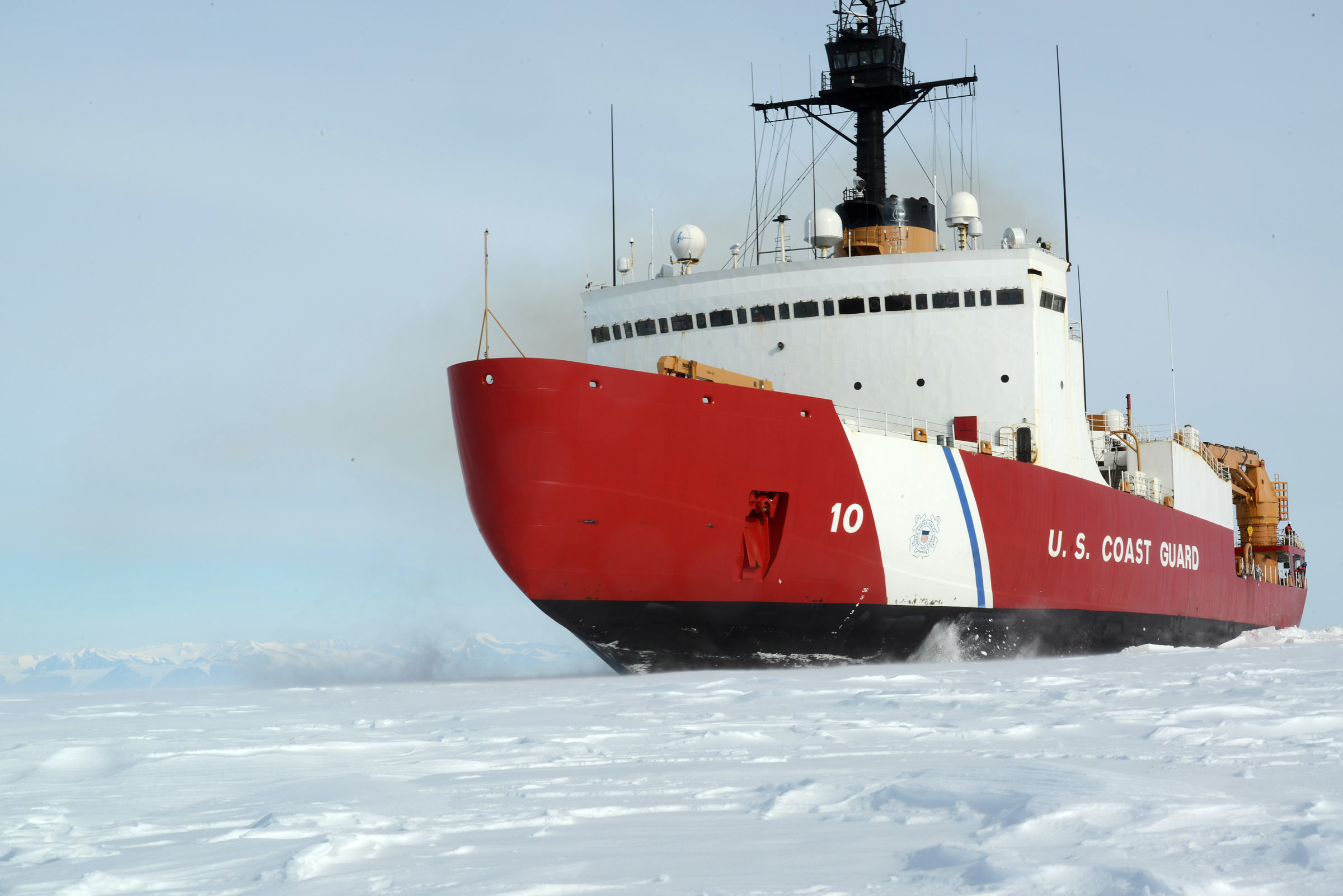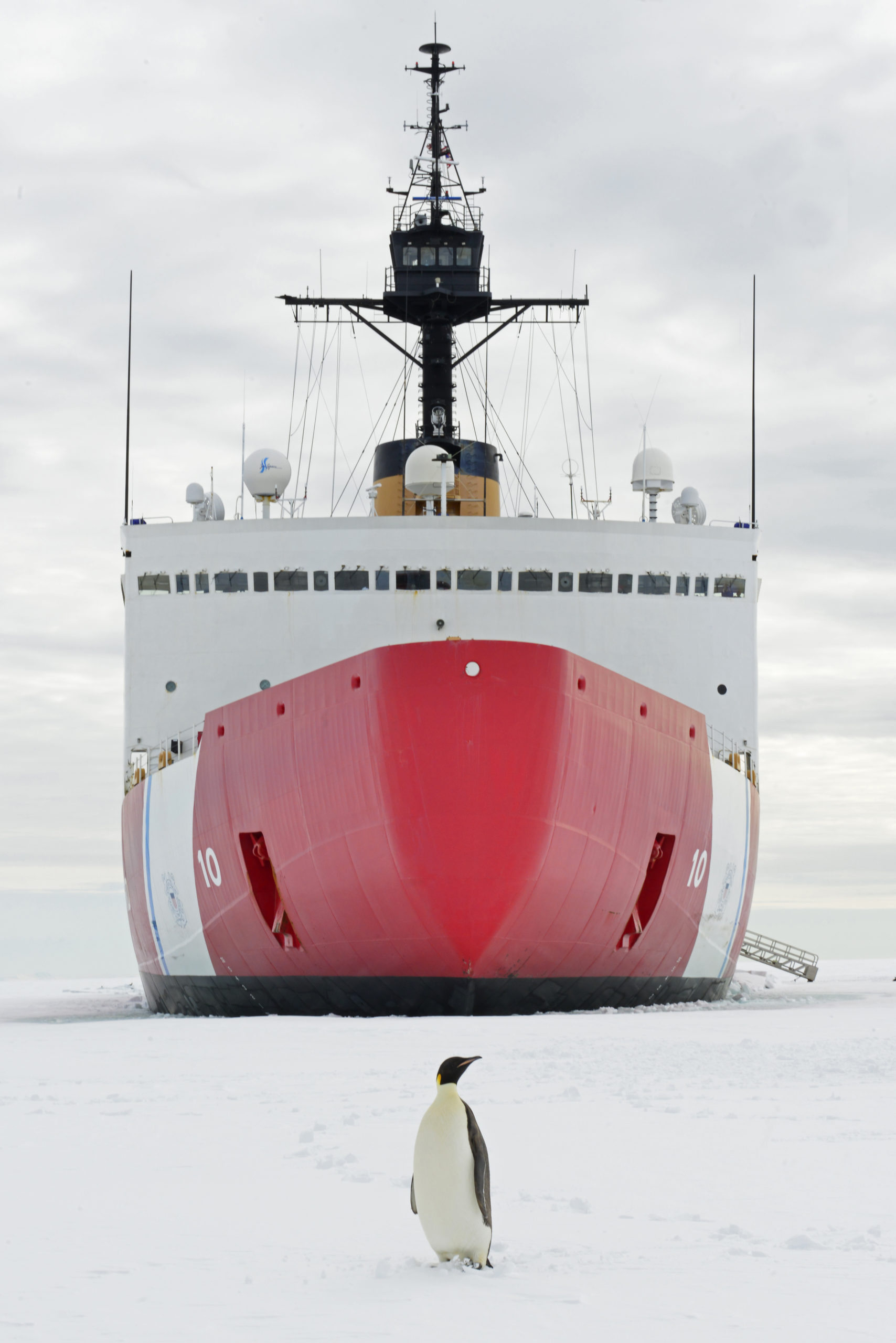A US heavy icebreaker is set to depart on its first winter Arctic mission in decades
It's the first time in four decades a U.S. icebreaker has conducted a wintertime mission north of the Arctic Circle.

On Wednesday, the U.S. Coast Guard will set off on its first winter mission north of the Arctic Circle since 1982.
The unexpected mission came about because of the coronavirus pandemic. The National Science Foundation cut back on staff and research at McMurdo Station in Antarctica this year, in order to reduce the chances of bringing COVID-19 there.
The reduced demand for supplies at the research station will be met by airlifts this winter, freeing up the heavy U.S. icebreaker Polar Star from the annual journey south.
Instead, Polar Star and her crew will head north.
[The U.S. heavy-duty Coast Guard icebreaker Polar Star will make a winter voyage to Arctic Alaska]
Captain William Woityra, commanding officer of Polar Star, said they received word in early October of the change in plans, and Coast Guard leadership immediately changed course for a three-month deployment to the Arctic.
“We just completely shifted our focus and changed everything we needed to do to make the preparations to go north, instead of south,” he told ArcticToday.
Woityra is no stranger to the Arctic. He was the operations officer on Healy from 2014 to 2016, a period when the medium icebreaker undertook five Arctic missions. He’s eager to return north again.
“We desperately need the coverage and the presence up in the Arctic,” he said.
The primary reason for this upcoming mission is show that the United States is present and active in the U.S. exclusive economic zone and territorial sea off of Alaska’s Arctic coast, Woityra said. “This is important to us and we will defend it.”
It’s also an opportunity to “conform with and model those international norms that will keep the Arctic peaceful and conflict-free in the future,” he said.
The exercise also provides a training opportunity for Coast Guard members to work in the Arctic winter. In addition, a small team of scientists aboard will take measurements and conduct some experiments.

Woityra called the mission a “great opportunity” for the Coast Guard to prepare for the challenges of operating in the region. “As we build the new polar security cutters, we’re going to have capability and capacity to carry out this mission that has been missing for a very long time — for decades,” he said.
This is the first chance to begin training the service members who will one day command and operate new icebreakers planned to come online in the next decade, in preparation for the Coast Guard having a “persistent year-round presence in the Arctic,” Woityra said.
In addition, it’s a chance to continue training crew members who normally conduct the Antarctica break-up. “Because of the military transfer seasons and the constant turn of personnel, I absolutely need to give them some experience in the ice this year, or we’re going to be in a significant hole next year,” Woityra said.
The heavy icebreaker will venture as far north as it needs to go to find ice, Woityra said. Arctic sea ice is forming unusually late this year, with the latest report indicating that ice edge is now starting to encroach on Utqiagvik.
The Star can move through six feet of ice easily, and it is capable of ramming through as much as 21 feet of ice.
In August, the U.S. medium icebreaker Healy suffered an electrical fire in one of its main motors, cutting short its only mission for the year. Healy is now facing extensive repairs this winter.
Healy usually sails in the Arctic missions during summer and fall months, when the waters are freer of ice — though it did undertake a winter mission in January 2012, escorting a Russian tanker into Nome during a fuel shortage.
“The big difference is the time of year,” Woityra said, which will make the mission particularly demanding. Polar Star’s crew is accustomed to breaking “really thick challenging ice” in Antarctica, he said, but that’s during 24 hours of daylight.
On its Arctic mission, by contrast, the ship will spend much of its time in polar night, or with minimal daylight.
“It’s going to be cold and it’s going to be dark,” Woityra said. “It’s also going to be lonely. We’re not expecting to see very many other people up there at all, just because of the time of the year and the ice conditions.”
The pandemic, in addition to altering the Star’s course, has also affected how the journey will take place. The crew has been tested for the coronavirus multiple times, and once the icebreaker departs Seattle, it will remain in the Puget Sound for 48 hours in order to make sure no cases develop.
Polar Star is now 44 years old, and it underwent a $62 million overhaul in 2010. The Coast Guard is planning to spend another $75 million over the next five years to continue extending the vessel’s life.
The first new U.S. heavy icebreaker in decades is expected in 2024. Polar Star will likely accompany that ship on its first journey to resupply McMurdo. After that, Woityra said, “Polar Star will be available for other missions like the one we’re doing this winter.”
Ideally, he said, Polar Star will continue working through 2029, when the second new heavy icebreaker is expected to be commissioned by the Coast Guard.
But having only two icebreakers, both of which have caught fire and experienced other issues, highlights the need to think long-term about recapitalizing the U.S. fleet before it’s a truly pressing matter, Woityra said.
The fire on Healy, which was commissioned in 1999 with a planned service life of 30 years, “really exposes the urgency for the Coast Guard to continue the planning process for a fleet of medium icebreakers,” Woityra said.
If Polar Star encounters difficulty on this mission, the Coast Guard has no other vessels for rescue, and would need to call on other nations for assistance.
In addition to recapitalizing the icebreaker fleet, Woityra said, the Coast Guard needs Arctic infrastructure improvements, too.
“A deepwater port in the west Arctic is going to be an operational necessity for us in the future,” he said. Dutch Harbor, the closest deepwater port, is some 1,000 miles south of the Arctic Circle, a four- or five-day journey in the wrong direction.
“That creates a gap in coverage for us,” Woityra said.